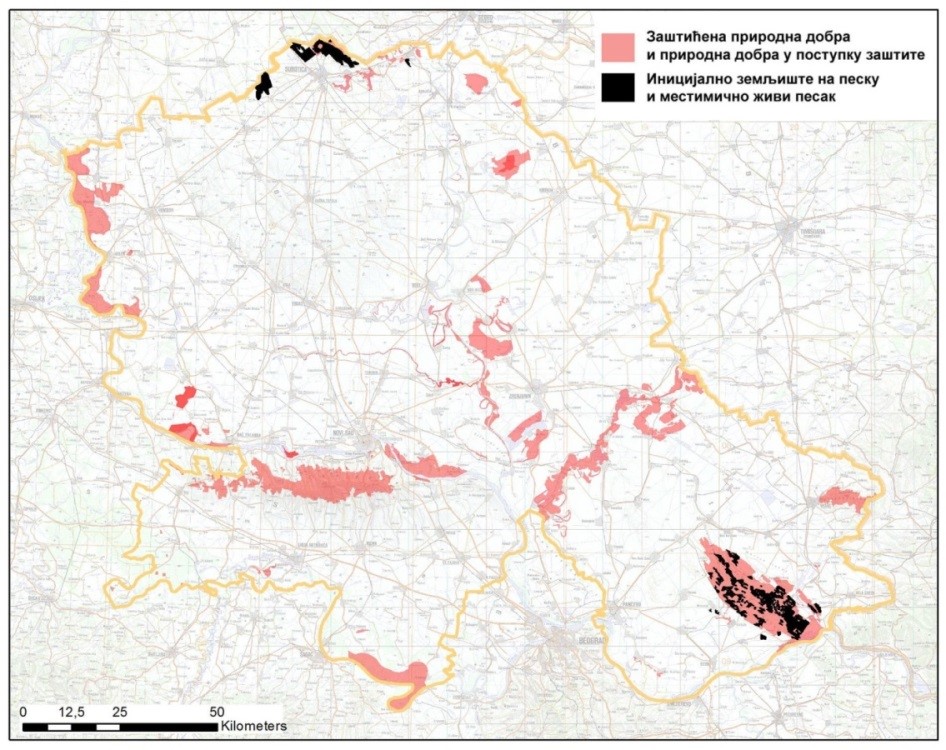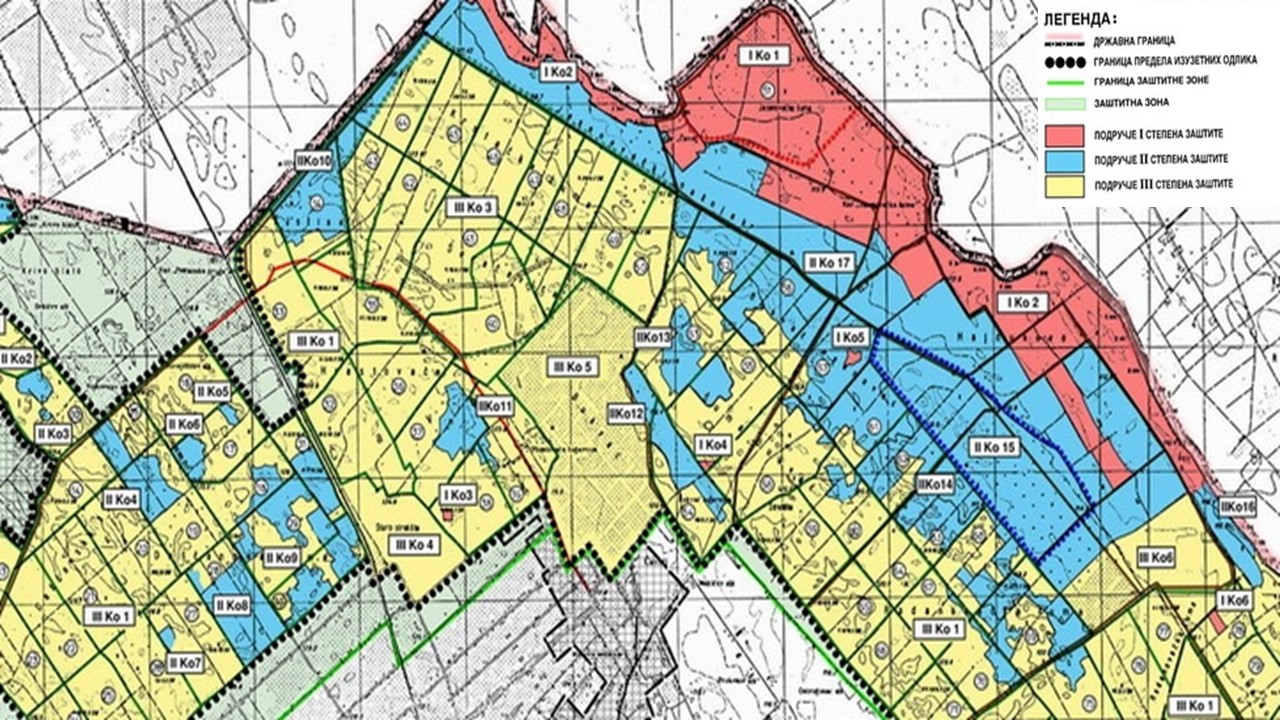Institution/Author: Provincial Institute for Nature Conservation, Novi Sad/Nikola Stojnić
According to EU requirements for the purpose of establishment of Natura 2000 network, Vojvodina Province belongs to the Pannonian biogeographical region, within which the Pannonian inland dunes are a priority type of habitat for protection (code *6120-Xeric and calcareous grasslands and *2340 – Pannonia inland dunes) which indicates their vulnerability on international level. The adjective “priority” refers to natural habitat types at risk of extinction present on the territory for which the EU has a special responsibility for the proportions of their natural distribution within the boundaries of the member states (Council Directive 92/43/EEC, Annex I). The current state and representation of habitat types in Vojvodina province is a consequence of a development strategy aimed at increasing the intensity of agricultural production, regardless of local ecological conditions. Natural vegetation is preserved in the form of more or less fragmented remains on soil types that are poorer in quality and therefore inconvenient for cultivation (sands, salt marshes) Pannonian inland dunes appear as a habitat type in Vojvodina on initial land, on the sand and sporadically on the live sand as a pedological surface. This type of land occupies 14 141.64 ha of land in Vojvodina Province. By overlapping the pedological map of Vojvodina and maps of protected areas it was found that 89.1 % of this type of surface is located within the protected areas: Special nature reserve „Deliblatska peščara“, landscape of exceptional qualities „Subotička peščara“ and special nature reserve „Selevenjske pustare“. This indicates that the inland dune habitats are almost completely covered by spatial protection.
Subotica inland dune is the same as Deliblatska inland dune and Selevenjska moor they are listed on the list of internationally important plant areas – IPA. They are also listed for ecologically important areas called Subotica lakes and moors, and Deliblatska inland dune within the national ecological network („Official Gazette of RS“, 102/2010). Pannonian inland dunes as a type of habitat on which inland dune vegetation was developed are well kept on significantly smaller surfaces than the total protected area. For the purpose of planning and implementation of protection of natural resources of great importance are spatial distribution, surfaces and structure of habitat types, and especially types for protection that has priority. On the Deliblatska and Subotica inland dunes dominate monocultures of allochthone woody species of acacia and black pine, while the remains of autochthonous inland dune and steppe habitats are preserved on forest clearings, meadow and pasture areas. Inland dune habitats are preserved on forest clearings, and on the meadow and pasture surfaces the steppe vegetation of sandy soil is preserved. Individual micro-habitats under inland dune vegetation often do not exceed the size of 0.01 ha. This is noticed in protected areas where natural habitats are under the I and II degree of protection and are mosaically distributed in the area (Szabados i Panjković, 2009).
Literature:
Butorac, B. & Panjković, B. (2013): Peščarska vegetacija u Vojvodini. Str.102-103.Pokrajinski zavod za zaštitu prirode, Novi Sad. 159. 2.
Sabadoš K. (2009): Zaštita i monitoring populacije peščarskog karanfila (Dianthus serotinus). Str. 44-47. In Panjković, B., ur.: Monitoring osetljivih ekosistema ugroženih biljnih i životinjskih vrsta na području Autonomne Pokrajine Vojvodine. Izveštaj za 2008. Tema 4: Monitoring populacija retkih i ugroženih biljnih vrsta na području Vojvodine: banatski božur (Paeonia officinallis subsp. banatica), kukurjak (Eranthis hyemalis), testerica (Stratiotes aloides), peščarski karanfil (Dianthus serotinus), Monotropa hypopitiys L. 1753 subsp. hypopitys, Ononis pusilla L. 1759, Peucedanum carvifolia (L.) Vill. 1779, Globularia punctata Lapeyr. 1813. i Ophrys scolopax Cav. 1793 subsp. cornuta (Steven) Camus 1908. Zavod za zaštitu prirode Srbije: 34-64, Novi Sad.
Author of maps:
Map of area on which inland dune vegetation can be expected in Vojvodina (Author: D. Čalakić – based on Živanović, 1972)
Inland dune habitats protected by the II degree protection, survived as isolated islands within forest monocultures (Protection regime III degree) (Author: D. Čalakić)

